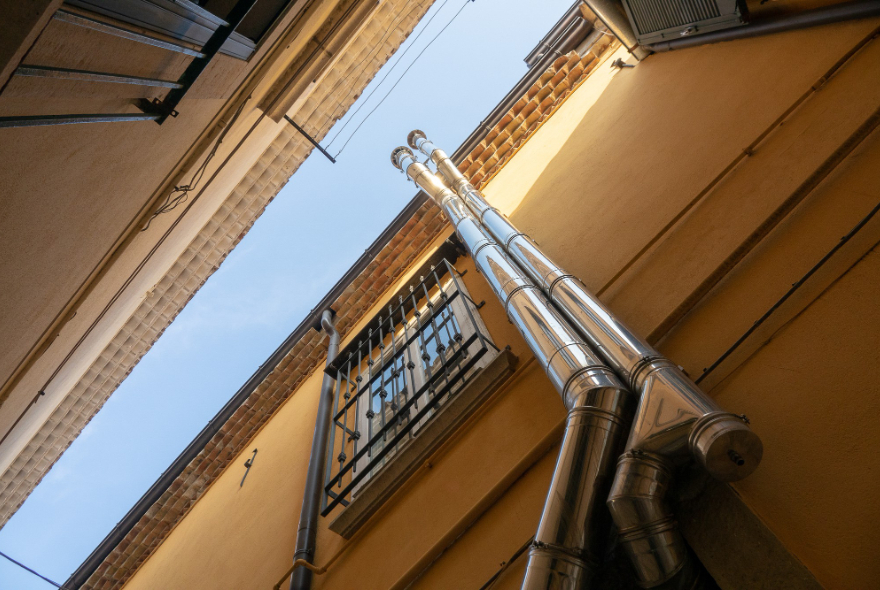
Gutter pipes are an essential part of any building's drainage system, whose function is to drain rainwater and prevent water accumulation that can cause damage such as flooding, damp walls, or corrosion. Over time, gutters can become clogged, damaged, or worn out, so it is important to perform periodic inspections to identify problems at an early stage. Gutter pipe inspections are performed using advanced methods that allow for an accurate diagnosis of the condition, while minimizing damage to the structure. In this article, we will review how gutter pipe inspections are performed, what the steps in the process are, and what is important to know to maintain a proper system.
A gutter inspection is a process of checking the condition of the pipes that carry rainwater from the roof to the drainage system to identify blockages, breaks, leaks, or other damage. The process is important because faulty gutters can cause flooding, moisture damage, and even damage to the building's foundations. Professional companies, such as those that perform Gutter pipe inspection, Using advanced technology to provide accurate diagnostics and prevent future failures, periodic inspection can save on high repair costs and ensure water flows smoothly even during severe storms.
The gutter inspection process begins with an initial inspection to identify signs of problems. The professional will examine the gutters from the outside, looking for signs of leaks, corrosion, or visible blockages, such as leaves, dirt, or debris that have accumulated in the gutter openings. Sometimes, problems like water running down exterior walls or water pooling around foundations can indicate a plumbing problem. The initial inspection also includes talking to the property owner to find out if there have been any problems in the past, such as flooding or unusual noises from the gutters during rain.
After the initial inspection, the specialist uses advanced technology to examine the inside of the pipes. The most common method is to use a pipe camera – a tiny camera that is inserted into the gutter and photographs the route of the pipe. The camera allows you to identify blockages, breaks, cracks, or loose connections inside the pipes, without destroying walls or digging. In some cases, a thermal camera is also used to identify leaks by temperature differences between the water in the pipe and the environment. This step provides a clear picture of the condition of the pipes and allows for an accurate diagnosis of the problem.
If blockages or debris build-up are found during the inspection, the next step is an initial gutter cleaning. Cleaning can be done using high-pressure water, which removes leaves, dirt, or objects blocking the flow of water. In cases where the blockage is deeper, the professional may use specialized equipment such as cleaning rods or suction devices. Cleaning gutters is essential to allow water to flow smoothly, and to prevent flooding during rain. It is important to clean carefully so as not to damage the pipes, especially if they are old or made of delicate materials.
After the inspection and cleaning, the specialist analyzes the findings and provides a detailed report on the condition of the pipes. The report includes a description of the problems found – such as cracks, loose connections, or corrosion – and photographs or videos taken during the inspection. Based on the findings, the specialist will recommend a course of action: In minor cases, spot repairs such as sealing cracks or replacing small sections may be sufficient. In severe cases, such as large cracks or extensive damage, entire sections of the pipes may need to be replaced. The report will also include recommendations for preventing future problems, such as installing filters in the gutter openings.
To reduce the need for frequent inspections and prevent problems with your gutters, maintain them regularly. Clean your gutters before the rainy season – remove leaves, branches and debris that can cause blockages. Install filters or screens in your gutter openings to prevent large debris from entering. Check your gutters after heavy storms to make sure they are not damaged. Avoid spilling substances such as oils or chemicals into your gutters, as they can cause corrosion. Regular maintenance will reduce the risk of flooding and extend the life of your pipes.
Every property owner – whether it’s a private home, a condominium, or a commercial building – should consider having their gutters inspected periodically. Tenants who experience problems like flooding, damp walls, or unusual noises from their gutters during rain need an inspection immediately. Older buildings, where the pipes may be worn out, also require regular inspection to prevent damage. Using professional inspection services will ensure that your gutters are in good condition and ready for the rainy season.